Category: Technology
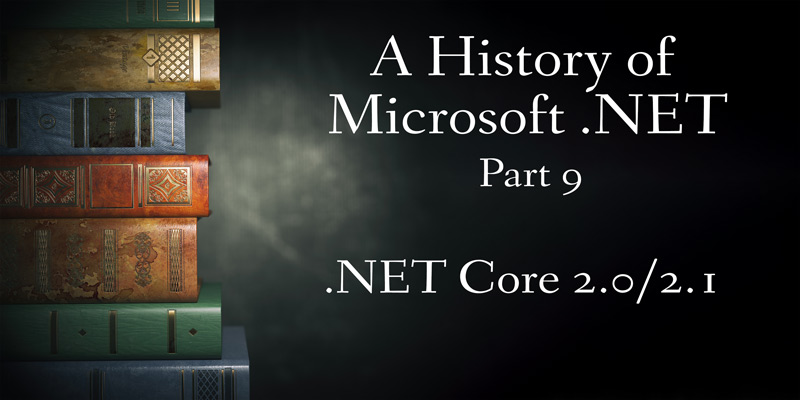
A History of Microsoft .NET, Part 9: Core 2.0/2.1
The release of .NET Core 2 was the first “real” version of .NET Core. The previous version (.NET Core 1) really wasn’t ready for primetime. But .NET Core 2 was a solid product. And in many ways, it was better than .NET Framework. First off, .NET Core 2 had all that was good about .NET…
Read more…

A History of Microsoft .NET, Part 8: .NET Core
Microsoft created the .NET Framework for many of us to write better software that ran on Windows. I’ve spent a good portion of my time developing with .NET Framework code, writing code that ran in web browsers. So ironically, the code did run on a variety of platforms. And with Mono, there was always a…
Read more…
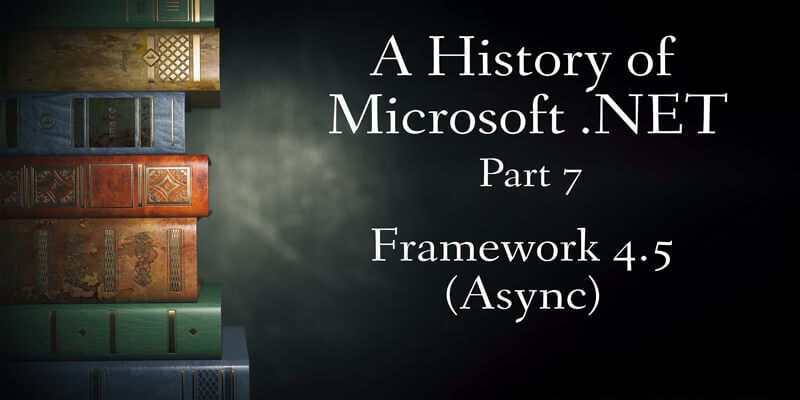
A History of Microsoft .NET, Part 7: Framework 4.5 (Async)
Much of our programming model is based upon the simple concept of putting data into a variable. This sort of programming typically goes by the term “imperative programming”. We are issuing a series of commands; the computer executes the commands. These commands typically are run in some very predictable order. Early programming languages even had…
Read more…

Relax, It’s CouchDB
CouchDB is a NoSQL database solution, which means it supports persistence of data. But you don’t have to spend a lot of time designing the relational structure upfront. This makes starting development with a NoSQL system easier than typical SQL databases because you don’t have to spend time defining relationships. Also, many NoSQL solutions favor…
Read more…
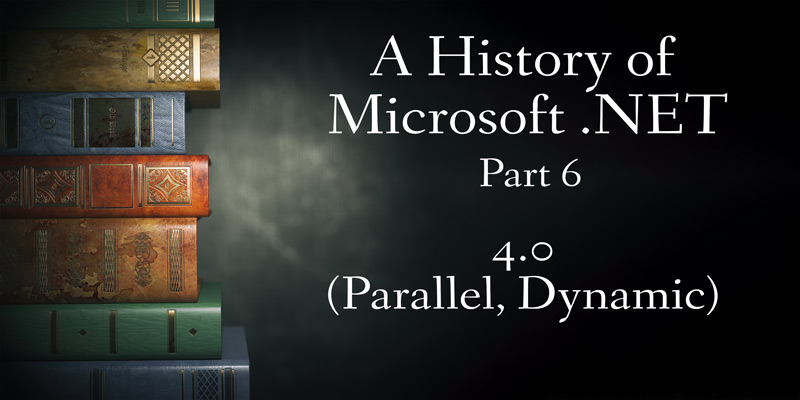
A History of Microsoft .NET, Part 6: 4.0 (Parallel, Dynamic)
.NET Framework 4, in some ways, is “the” .NET. This is when .NET felt like a super solid platform that didn’t need anything else. It was great. Ironically, I don’t think .NET 4 added much over .NET 3.5, but it felt like a clean solution was fully brought together. It was released alongside Visual Studio…
Read more…
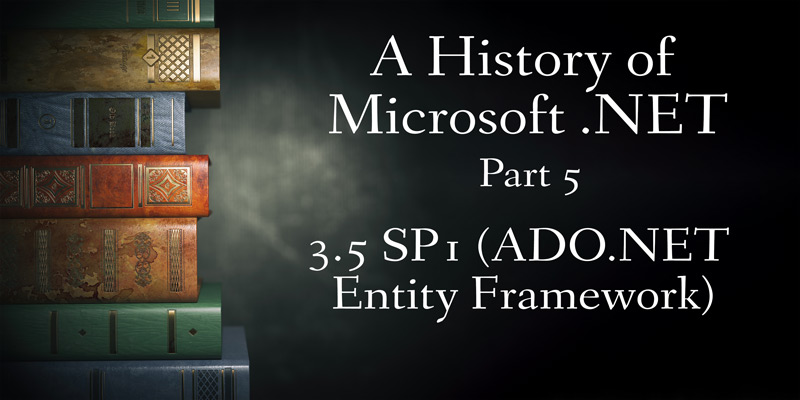
A History of Microsoft .NET, Part 5: 3.5 SP1 (ADO.NET Entity Framework)
SqlConnection, SqlCommand, SqlDataReader, and SqlDataAdapter are classes we were very familiar with in 2008. If you wanted to write a database query, you were probably using a combination of these classes. Things changed in 2008 with the release of .NET 3.5 SP1, giving .NET a Microsoft-provided Object-Relational Mapping (ORM). A lack of ORM was becoming…
Read more…
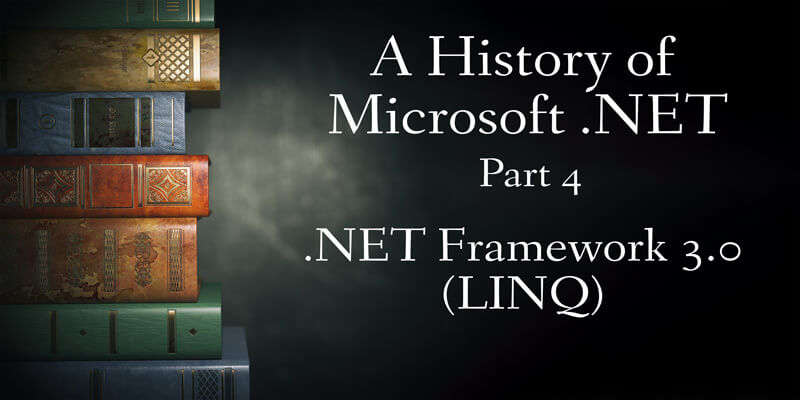
A History of Microsoft .NET, Part 4: .NET Framework 3.0 (LINQ)
We have covered a lot of history in this series so far. We have covered many incremental improvements to C# and .NET. Things such as Auto-Implemented Properties were improvements, but they felt like incremental improvements to the language (although I think that one notable exception would be the addition of Lambda expressions). LINQ wasn’t a…
Read more…

A History of Microsoft .NET, Part 3: .NET Framework 3.0/3.5 (WPF, WF, WCF, Auto-Implemented Properties)
.NET 3 was a pretty big change, maybe the most significant change since the creation of Microsoft .NET Framework. It was fundamentally changed in ways that brought in many amazing features into the language. Here I will cover WPF, WF, WCF, and Auto-Implemented Properties. The first change was WPF, which stands for Windows Presentation Foundation….
Read more…
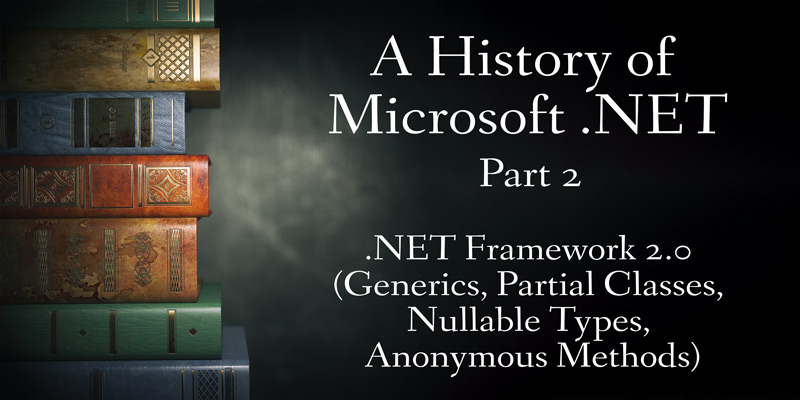
A History of Microsoft .NET, Part 2: .NET Framework 2.0 (Generics, Partial Classes, Nullable Types, Anonymous Methods)
When .NET Framework 2.0 was initially released, I was working on a .NET Framework 1.1 project that was becoming a bit of a pain. Moving to 2.0 seemed like just the thing the project (and I) needed. The addition of support for generics in 2.0 was a win in and of itself, but also adding…
Read more…

A History of Microsoft .NET, Part 1: Introduction
When you’ve been writing software as long as I have, it’s fun to look back at how far technology has advanced throughout your career. I’ve been thinking a bit lately about C and .NET, and basically the whole Microsoft stack. This led me down the rabbit hole of reading and remembering (and sometimes finding out…
Read more…
